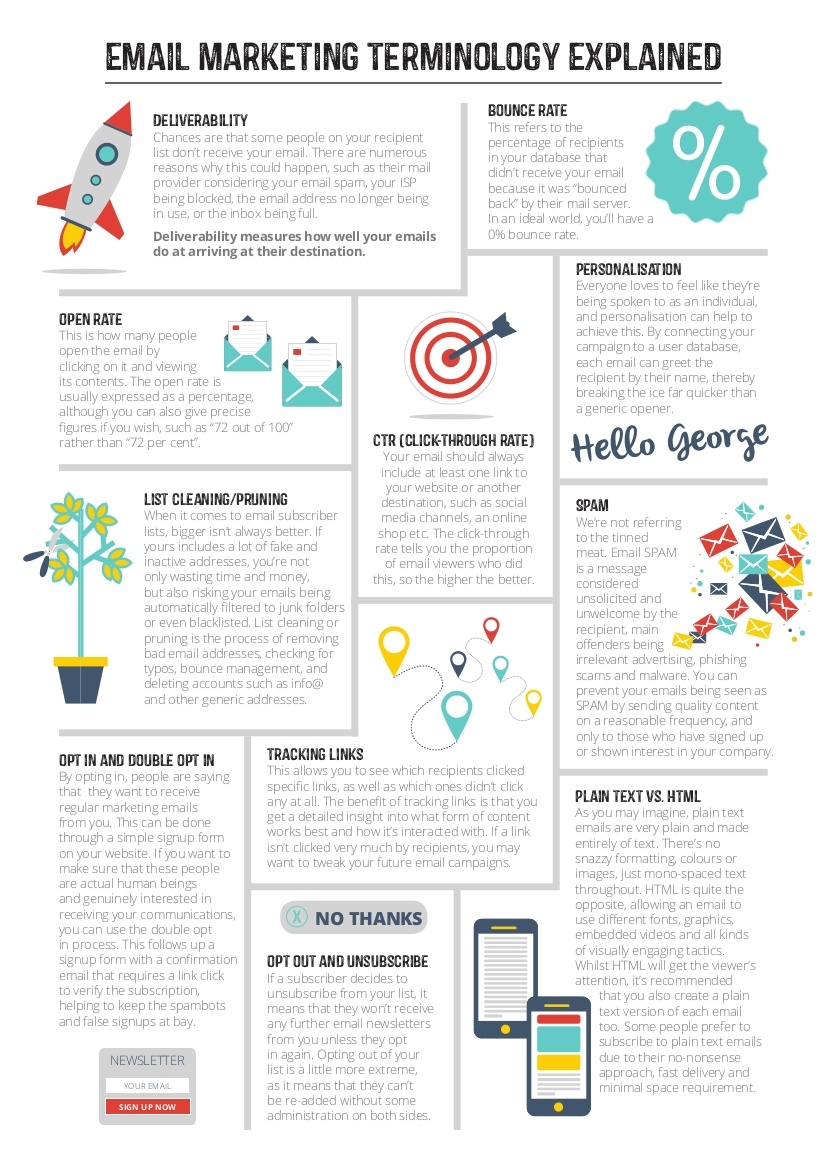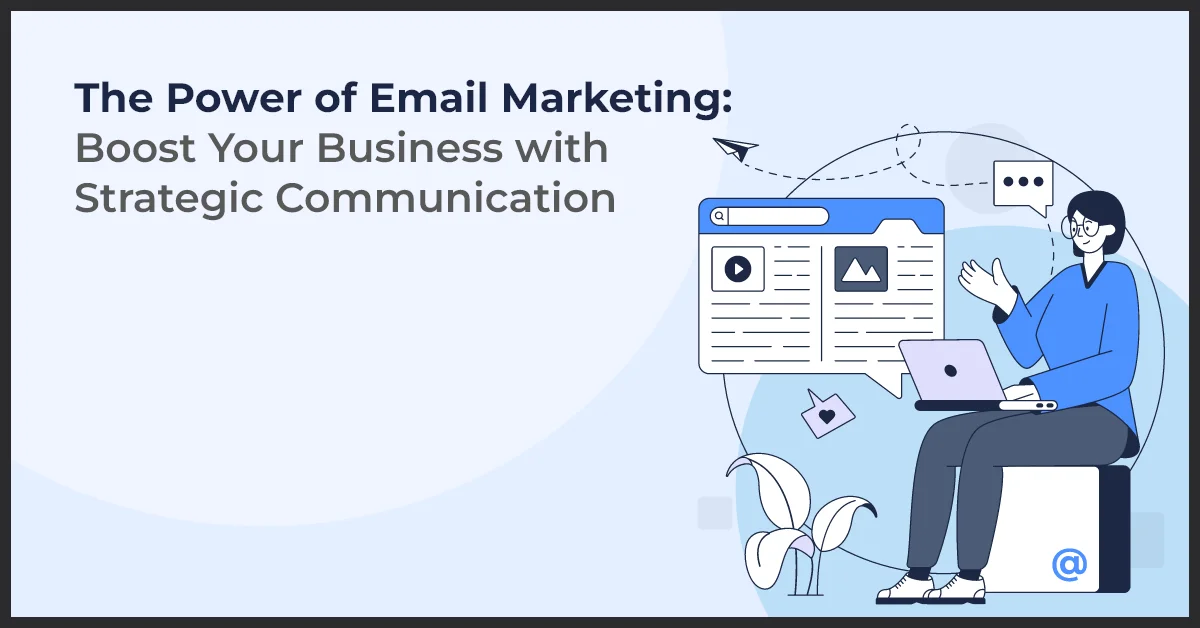Imagine a marketing tool that allows you to reach your customers directly, with personalization and at a low cost. This is email marketing, an ancient game-changer in the digital world. But as simple as it may sound, effectively decoding its comprehensive definition requires an understanding beyond “sending emails”.
Email marketing, rooted in the birth of the Internet era, serves both as a direct and digital marketing tactic that involves sending promotional messages to a group of people via email. A pew research stated that 92% of adults in the U.S use email, thus making email marketing a crucial part of digital marketing strategy in 21st century.
Email marketing is a targeted, efficient digital marketing strategy that involves sending emails to a group of people. Intricately woven into various business operations, it aids in building customer relationships, increasing brand recognition, and driving website traffic. Understanding its depth requires decoding its many elements comprehensively.

Understanding the Puzzle: Decoding Email Marketing
World of digital marketing extends far beyond social media or SEO, encompassing various strategies and techniques to drive results. In this realm, one of the most tried-and-true methods is email marketing. Fundamentally, ‘Decoding Email Marketing’ refers to understanding its comprehensive definition, implementation, and its importance in a well-rounded digital marketing strategy.
Defining Email Marketing: Why is it important?
In simplest terms, email marketing is the act of sending a commercial message to a group of people, using email. It involves using email to send advertisements, request business, or solicit sales or donations. Broadly speaking, any email sent to a potential or current customer can be considered email marketing. But, Decoding Email Marketing A Comprehensive Definition goes beyond this straightforward explanation.
Why is email marketing important? Studies suggest that email marketing can yield significant return on investment (ROI). In fact, every $1 spent on email marketing typically generates about $38 in ROI, making it a highly effective marketing channel. Moreover, it allows businesses to maintain direct contact with their customers, which is crucial for customer retention and brand loyalty.
Email marketing serves multiple functions. It can be used to educate new customers, drive event participation, promote content downloads and direct sales, nurture leads and build long-term customer relationships. It connects your audience to your brand, helps you stay at the top of their mind and urge them to take action.
Fundamentally, effective email marketing converts prospects into customers and turns one-time buyers into loyal, raving fans. Its strategic implementation ensures frequent touch points with your customers without overstepping boundaries – a key element to business success in the digital era.
Key Components of Email Marketing
The first essential element of email marketing is the email list – a database of contacts that have expressed an interest in your brand and given you permission to send them emails. This can be built through several methods – website sign-ups, purchases, inquiries, events, social media, and more. Having a quality email list ensures that your email marketing efforts are not wasted on disinterested parties.
Secondly, an effective email marketing campaign needs to have a clear purpose, well-defined goals, and a targeted audience. Though the end goal for most businesses will be to increase sales, there can be intermediate goals such as improving brand awareness, driving website traffic, or increasing event attendance.
The third component is content. An email that offers no value to its recipient will likely be deleted and may cause the recipient to opt out of future communications. Compelling content, a clear call-to-action, personalization, and professional design are crucial for an effective email.
Delving into Email Marketing Strategies
Email marketing do not thrive in a vacuum; understanding must be coupled with strategic implementation for maximum benefit. Therefore, stepping further into the world of ‘Decoding Email Marketing A Comprehensive Definition’ warrants a closer look at these strategies and best practices, that ensure email effectiveness.
Segmentation and Personalization
Segmentation involves dividing your email list into smaller, more targeted groups based on criteria you define. These segments could be based on demographics, buying behavior, customer loyalty or any other data you’ve gathered. Segmentation allows for more personalized and relevant communication, which typically results in higher engagement.
Not to be confused with segmentation, personalization refers to including elements in the email that are tailored to the individual. This could be their name, references to past purchases or behaviors, recommendations based on preferences, and more. Personalization has been shown to increase unique open rates and click-through rates, showing that it is effective in engaging recipients.
Analyze the behavior and preferences of your email list to segment it accurately. With advanced email marketing software, you can even automate this process. Next, tailor your emails to these segments using personalization, ensuring each recipient gets content that is most relevant to them.
In a Nutshell, segmentation and personalization are crucial aspects of ‘Decoding Email Marketing A Comprehensive Definition’. These strategies, when well executed, can significantly improve the success of your email marketing efforts.
Optimizing Email Design and Layout
In email marketing, design isn’t just about aesthetics—it’s about function. Your email’s layout should make it easy for readers to know what they should do next, i.e., what your email’s call to action (CTA) is. The design should be clean and uncluttered, with visuals complementing your content, and not distracting from it.
Email design also needs me mobile-friendly. With over 46% of all emails being opened on mobile devices, it’s critical to ensure your emails render well and are easy to engage with no matter the screen size. Most, if not all major email marketing providers have mobile-friendly templates.
Finally, despite the visual nature of email, copy continues to be an essential element of successful email marketing. Your wording needs to be engaging, approachable, and action-oriented. Balancing all these aspects, email design and layout become a crucial part of successful email marketing campaign.
In conclusion, ‘Decoding Email Marketing A Comprehensive Definition’ isn’t just about understanding the technical aspects, but also knowing how these elements integrate into your broader marketing strategy. With careful planning, analysis, and execution, email marketing has the potential to bring significant value to your business.
Decoding Email Marketing: A No-Nonsense Guide to Making It Work
Understanding Email Marketing in Depth
Email marketing is the set of strategies aimed at promoting products or services through electronic mail. Businesses use this powerful tool to engage with their audience, build brand reputation, increase conversion rates, and drive website traffic.
This form of digital marketing focuses on creating informative, engaging email content tailored to subscriber preferences. However, it involves not just creating valuable content but also ensuring effective email delivery, including spam filters, applicable laws, and algorithms in place by email service providers.

Frequently Asked Questions
Let’s dive into the key aspects of email marketing. Here are some commonly asked questions to enhance your understanding.
1. What exactly does email marketing entail?
Email marketing is a digital marketing strategy that involves sending emails to prospects and customers. The goal of these emails could be to enhance relationship with customers, keep them informed, or encourage them to take a particular action, such as purchase a product or service.
Effective email marketing can convert prospects into customers and turn one-time buyers into loyal, repeat customers. Emails can be tailored to customer actions so when they receive the email, it aligns with their specific needs.
2. How can one decode the success of an email marketing campaign?
Decoding the success of an email marketing campaign involves assessing several key performance indicators (KPIs). This could include the email open rate, click-through rate (CTR), conversion rate, bounce rate, and unsubscribe rate. These KPIs can give a clear picture of how well the campaign is performing.
Additionally, assessing the return on investment (ROI) is crucial. This involves comparing the revenue that the campaign brought in relative to its cost. A high ROI would indicate a successful email marketing campaign.
3. What are the components of a comprehensive email marketing campaign?
A comprehensive email marketing campaign typically includes a series of emails sent out regularly to a targeted list of recipients. These emails can vary widely in content and purpose, based on the specific goals of the campaign. They can include promotional emails, informational content, reminders, newsletters, and transactional emails.
Moreover, a comprehensive campaign also includes tracking and analyzing performance data, carrying out tests on different components of the emails, refining the list of recipients regularly, and optimizing the emails for different devices and email clients.
4. What makes an email marketing strategy effective?
An effective email marketing strategy is targeted, personal, and involves regular monitoring and optimization. A successful email marketer understands their target audience’s needs and preferences, personalizes the email content to align with these needs, and tracks performance to continually improve the strategy.
Furthermore, an effective strategy must comply with data privacy laws and regulations. It should also focus on growing and refining the list of email subscribers consistently, to ensure a wide reach of the marketing messages.
5. How does email marketing fit in the broader digital marketing landscape?
Email marketing is a crucial component of the broader digital marketing landscape. It aligns closely with content marketing, as it involves creating and sharing valuable content to attract and engage a targeted audience. It also supports SEO and social media marketing by driving traffic to quality content.
Moreover, email marketing complements advertising efforts by keeping products or services top of mind for prospects and customers. It has the potential to significantly boost the effectiveness of other digital marketing strategies and create a streamlined, coherent digital marketing plan.
6 Great Email Marketing Campaigns Examples (As Chosen By Experts)
To put it all together, email marketing is much more than sending loads of emails. It’s about building relationships with your customers, analyzing your results, and continuously improving your strategy. Remember, great email marketing encourages customer loyalty and drives business growth.
So, give email marketing a shot! Create strategic and creative content that truly engages your audience. With the right approach, it’s a tool that can do wonders for your brand. Good luck!